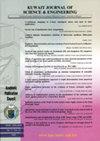Comparison of fast regression algorithms in large datasets
引用次数: 0
Abstract
The aim is to compare the performances of fast regression methods, namely dimensional reduction of correlation matrix (DRCM), nonparametric dimensional reduction of correlation matrix (N-DRCM), variance inflation factor (VIF) regression, and robust VIF (R-VIF) regression in the presence of multicollinearity and outliers problems. In all simulation-scenarios, all the target variables were chosen for final models using four methods. The DRCM and N-DRCM are the methods that reach the final model in the shortest time, respectively. The time to reach the final model using R-VIF regression was approximately twice shorter than that of VIF regression. In each method, as the number of variables and the level of outliers increased, the time taken to reach the final model increased. When the level of multicollinearity and the number of variables (p > 500) increased, the times to reach the final models using DRCM in datasets with outliers were slightly shorter than the those of N-DRCM. The largest numbers of noise variables were selected to the model using DRCM and N-DRCM, but the least number of them were selected to the model using the R-VIF regression. The RMSE values obtained using DRCM, N-DRCM and VIF regression were similar in each scenario. As a result of the real dataset, the final model selected using R-VIF regression had the highest R2. It also had the lowest RMSE value among those obtained with other approaches excluding VIF regression. As such, the R-VIF regression method demonstrated a better performance than the others in all datasets.大型数据集快速回归算法的比较
目的是比较快速回归方法,即相关矩阵降维(DRCM)、非参数相关矩阵降维(N-DRCM)、方差膨胀因子(VIF)回归和鲁棒VIF (R-VIF)回归在多重共线性和离群值问题下的性能。在所有模拟场景中,使用四种方法选择所有目标变量作为最终模型。DRCM和N-DRCM分别是在最短时间内达到最终模型的方法。使用R-VIF回归得到最终模型的时间大约比使用VIF回归的时间短两倍。在每种方法中,随着变量数量和异常值水平的增加,到达最终模型所需的时间增加。当多重共线性水平和变量数量(p > 500)增加时,在有异常值的数据集上使用DRCM达到最终模型的时间略短于N-DRCM。采用DRCM和N-DRCM模型选择的噪声变量数量最多,而采用R-VIF回归模型选择的噪声变量数量最少。在每种情况下,采用DRCM、N-DRCM和VIF回归得到的RMSE值相似。由于真实数据集,使用R-VIF回归选择的最终模型R2最高。在除VIF回归外的其他方法中,它的RMSE值也最低。因此,R-VIF回归方法在所有数据集上都表现出比其他方法更好的性能。
本文章由计算机程序翻译,如有差异,请以英文原文为准。
求助全文
约1分钟内获得全文
求助全文
来源期刊

Kuwait Journal of Science & Engineering
MULTIDISCIPLINARY SCIENCES-
自引率
0.00%
发文量
0
审稿时长
3 months
 求助内容:
求助内容: 应助结果提醒方式:
应助结果提醒方式:


